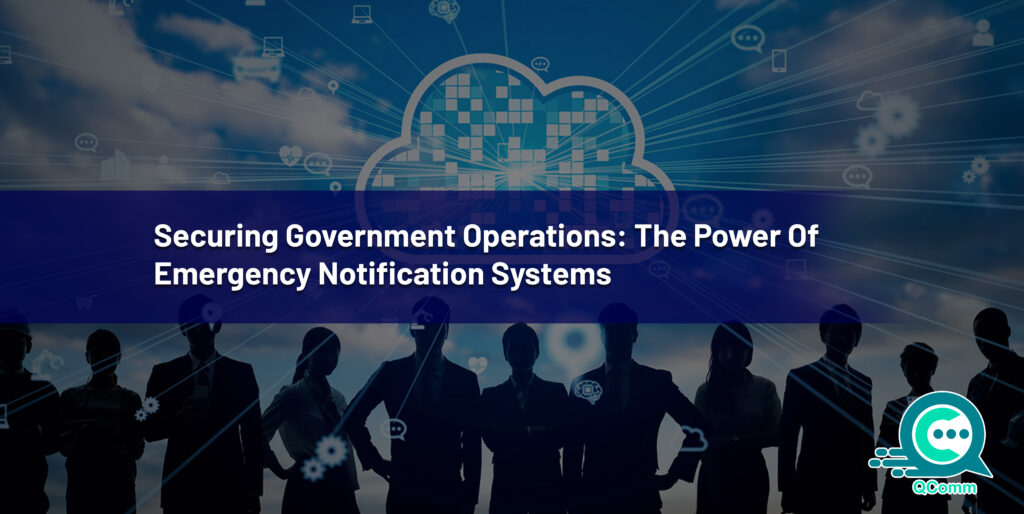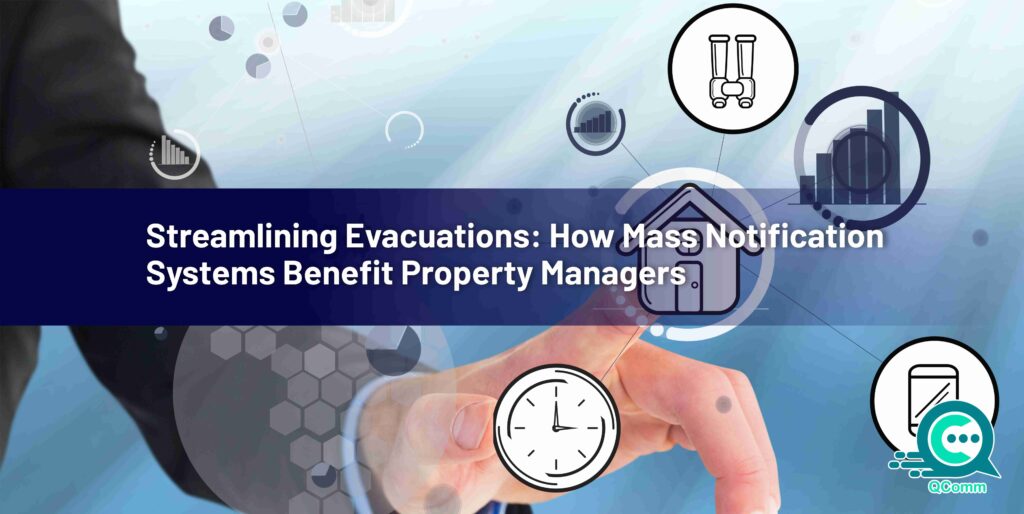
The government bodies must ensure a stable operational system even when they are amidst a crisis. If a robust business continuity plan is established by Government organizations, then it would serve as a guiding framework for them to perform their regular functions and operations both during and after an emergency. Encompassing a government emergency alert system into such plans would work wonders in a negative situation. This article focuses on government organizations and why and how a business continuity plan is important for such an organization.
Importance Of Business Continuity For Government Organizations
Government entities are responsible for providing all vital services to the public at all levels. Therefore, government organizations need to have a well-crafted business continuity plan and a plan to recover from disastrous situations.
An elaborated business plan assists the organization in identifying and prioritizing an important operation, which in turn will help the organization to allocate the required resources and focus on quick recovery if an incident occurs. Therefore, it is essential to strike a balance between safeguarding both employees and members of the community as well as the continuity of business operations.
If an effective business continuity plan is not in place, then organizations can exacerbate already difficult situations. With the absence of well-defined protocols, there will also be an absence of a way of recovery for the organization.
If such a situation has not occurred in your organization, there is no surety that the scenario will remain the same in the future. In recent years, there have been various instances of the failure of a business continuity plan. Following are examples of some notable cases:
- The government of Atlanta, Georgia, incurred a loss of $17 million to rectify a cyber attack intended on the computer systems of the city. Due to this cyber attack, the people of Atlanta were prevented from paying bills to the city online, issuing warrants, processing inmates, and being unable to pay court fees, among other issues.
- The drivers were unable to renew their license or vehicle registration as the California Department of Motor Vehicles suffered a computer outage for many days.
- Various lapses in business continuity hampered the recovery efforts post-Hurricane Katrina. These failures included the inability on the part of the organizations to communicate and the inability to mobilize resources that could help in the safety of the community. It also led to widespread confusion.
- Several ransomware attacks have severely impacted hospital systems, making them incapable of conducting operations and unable to get access to patients’ files. These incidents have also led to the cases of deaths and injuries of patients.
The government bodies, therefore, are expected to have an efficient business continuity plan across various jurisdictions. Regulatory organizations like the Australian National Audit Office in Australia necessitate that all government bodies have a proper business continuity plan in place as part of risk planning and accountability obligations.
Primary Threats Faced By Government Organizations In Business Continuity
Government organizations should keep in mind the following risks that they may encounter, which could potentially prevent them from carrying on with their work:
- Natural calamities like earthquakes, hurricanes, forest fires and floods.
- Prominent IT failures
- Significant system outages like internet, electricity, and gas.
- Different types of cyber attacks such as ransomware, hacking, and viruses.
- Pandemics and widespread health problems
- Terrorist attacks’
- Casualty incidents and accidents of masses
- Civil disorder, and more.
Have a suitable idea in place:
Before: You should be ready to guide your organization during a crisis so that your organization can operate during and after any critical situation. Every employee should be given their respective roles and responsibilities so that all the operations happen in a critical situation promptly.
During: It should be ensured that the plan made to operate in critical situations is followed and every employee is doing his or her job as assigned in the business continuity plan.
After: The success of the plan should be analyzed along with what part of the plan worked and what part of the plan didn’t, which would need amendments for the future.
Assess your ideas:
Before: The business plan should be assessed every day to find out its effectiveness. The employees should be trained as well as properly prepare themselves to work in a difficult situation.
During: While the idea is being assessed, it should be noted that it is being tested by the organization’s risk profile.
After: After the plan is assessed, the test should be evaluated, and necessary corrections should be made to the plan.
Protection of data:
Before: The security of your data should be analyzed to figure out if there are any risks involved. You should switch over from on-site servers and centers to cloud-based services.
During: The system can be restored from the current backup, which is secured.
Do not neglect the significance of communication:
Before: Time should be taken to develop proper business continuity internal communication strategies so that you can communicate internally with the employees and stakeholders.
During: As a part of internal communication in an organization, the templates that are prepared should be used and the plans should be properly followed so that employee communication should take place promptly, which can prevent the employees from getting confused and misinformed.
After: The success of the plan should be evaluated. Whether the internal communication tools worked or not should be confirmed. If necessary, your internal business communication tools should be adapted in the future.
Fund an emergency alert system:
Before: An emergency alert system should be bought and installed in your organization to support any business continuity plan.
During: Internal office communication should be made with the employees to send them government emergency alerts to make sure they understand the scenario and what is expected of them. There are different types of internal communication tools, and an organization should ensure the adoption of creative internal communication tools.
After: The employees can continue to be contacted, and you can get their feedback to understand from their perspective how the situation went.
Amongst various internal communication tools for employees, 2B Innovations is one of the most effective internal communication tools that will enable your organization to send vital information to your employees during a critical scenario that would lead to uninterrupted business operations of your organization.
It is one of the best internal communication tools because it can be installed on any device such as mobile phones, laptops, tablets, and desktop computers. It can also transform digital screens into moving billboards by efficiently displaying important information on them. 2B Innovations can send messages in many formats across various channels such as pop-up alerts, desktop tickers, corporate screensavers, lock screen alerts, surveys, polls and quizzes, SMS notifications, mobile app alerts, and more. It not only helps in improving employee communication but also in measuring internal communications to ensure efficient and optimized operations.
The core design principle of Deskalert is to grab attention and reduce all digital media so that the employees are aware of all the important information. It is an important factor that causes success in business continuity as people get the right information at the right time.
Advantages Of 2B Innovations In Government Emergency Management
Employees can be notified about any type of IT emergency. For example, a cyber attack.
- Thousands of employees can be notified about an emergency in less than a minute. For instance, if the employees are stuck in a riot during civil unrest, they could receive important information about the scenario in a couple of seconds.
- 2B Innovations can be a part of your emergency preparedness drills and business continuity training programs for the employees.
- 2B Innovations can be used as a complement to other emergency company internal communication systems you have in place, like government emergency telecommunication services.
- It is compatible with any other operating system. For instance, it can send government alerts for the iPhone and government alerts for Android.
- Visual content, such as videos, can be sent to the employees so that they can understand the important information.
- 2B Innovations can send messages at any time at any place, even if the employee is working at home or the office. Thus, providing information about business continuity plans efficiently. For instance, if you want your employees to work remotely, you can send them government notifications on their phones.
- The survey module can be used to get feedback from employees about their safety in real-time.
Besides emergencies, 2B Innovations can be used for general internal business communication and support global corporate communications.
Unforeseen situations may occur at an unexpected time. Therefore, it is important to be prepared for the least expected scenarios. It is your choice whether to continue your business operations efficiently even in critical situations or not. If you are planning for business continuity, do get in touch with our expert team and understand how 2B Innovations can help your business operate even in unforeseen circumstances. It is essential to introduce internal crisis communication for efficient and smooth crisis management. Other ways to ensure the best internal comms are to introduce an internal communications team, follow HR internal communication practices, focus on internal and external communication, introduce internal marketing communication tools, and above all, encourage an internal workplace communication environment.


